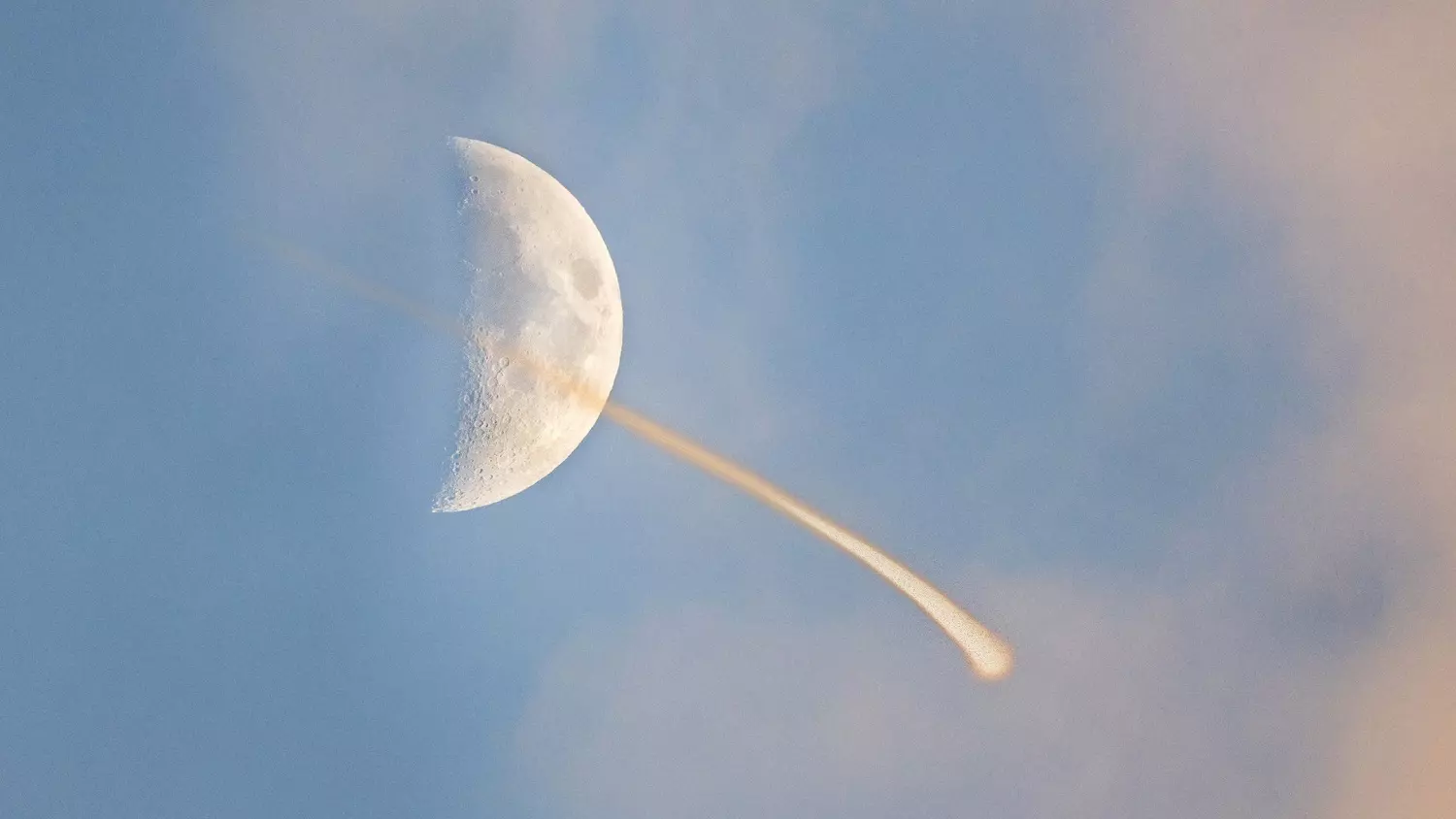[Originally published as part of UFOs and Extra-Terrestrial Life]
As an astronomer, I spend a great deal of time outside at night looking up. I have seen many wonderful things in the night sky. And I am often asked if I have ever seen a UFO. Before I answer that question, it is always helpful to define our terms.
What is a UFO?
The label UFO is the abbreviation for an “unidentified flying object.” Namely, if you see an object that appears to be flying, and you cannot identify it, then it is a UFO. At least, it is a UFO to you. Someone else may be able to identify the object; to that person it is an IFO (an identified flying object). I have seen many things in the night sky that other people would classify as a UFO. But in all cases, I have a pretty good idea what they are. So, for me, they are IFOs.
Common UFOs
With a little knowledge of astronomy and meteorology, many UFOs become IFOs. The most commonly reported UFO is the planet Venus. Depending on where it is in its orbit, Venus can appear in the western sky shortly after sunset or in the eastern sky shortly before sunrise. People are often surprised by how bright this planet can appear, particularly as twilight fades into night. Furthermore, when Venus is very close to the horizon, atmospheric effects can make Venus appear to rapidly change color and even move about slightly.
Atmospheric refractive phenomena are sometimes reported as UFOs.
For example, a bright, diffuse spot of light sometimes appears 22 degrees to the left or right (or both) of the moon or the sun.
- When associated with the moon, these are called paraselenae, moon dogs, or mock moons.
- When associated with the sun, they are called parhelia, sun dogs, or mock suns.
Both phenomena are caused by the refraction of light through ice crystals in the atmosphere. Sometimes, they occur in conjunction with a large halo surrounding the sun or moon with a radius of 22 degrees. Parhelia are usually colorful like a rainbow but less saturated. The colors are not as obvious with paraselenae due to their lower luminosity. There are several other kinds of similar meteorological phenomena.
Satellites are sometimes reported as UFOs.
These appear as (usually) faint, slowly moving stars. They are visible to the unaided eye because they reflect sunlight. They seem to fade into nothing when they pass into earth’s shadow. A few are remarkably bright, such as the international space station. Starlink satellites are also very bright shortly after they have been launched and occur in a long string of bright points.
Occasionally a satellite will catch sunlight at just the right angle and will briefly appear very bright — a sun glint. In particular, “Iridium flares” were a very common phenomenon years ago in which Iridium communication satellites would briefly flare up, often much brighter than Venus! These events were predictable to the second. But these particular satellites have all been replaced as of December 2019. Still, less predictable sun glints from other satellites continue to occur from time to time. Occasionally, a spinning satellite such as a spent rocket casing will produce a series of semi-regular, rapid pulses in brightness due to sun glints.
Balloons are a common source of reported UFOs.
These can be anything from high-altitude weather balloons to the common helium balloons used at parties. The mylar surface of certain party balloons is highly reflective, making them easy to spot even from large distances. These are sometimes reported by pilots over the ocean — generally very near where a cruise ship has passed.
Drones are commonly reported as UFOs. These days, drones are relatively inexpensive, and so more people are buying them. Some drones are equipped with lights that can be seen at night. There are even companies like SkyMagic that perform computer-controlled night shows with drones.
Temperature inversions can cause all sorts of interesting visual effects.
Many of these have contributed to UFO reports. Normally, the air temperature decreases with altitude. But occasional local weather conditions will reverse this, such that air temperature increases with altitude for some distance. This causes light to refract, particularly light traveling nearly parallel to the surface of earth. Inversions allow us to see farther than the normal horizon because the light curves in the same direction as earth. The effect can cause distant car headlights to appear to move in unusual ways.
Lens flares are a common source of UFO reports.
These are due to internal reflections within a camera, particularly when taking a picture or video of something very bright. In fact, internal reflections of various kinds are quite common when looking through glass or some other transparent surface. The brain can mistake a reflection of something behind the observer as actually being far away in the sky. Observations made through glass are notoriously unreliable.
Rocket launches are occasionally reported as UFOs.
This is particularly the case when a launch goes wrong and the rocket spins out of control in the atmosphere. The exhaust can create a spectacular spiral pattern. I recall seeing one of these when I was very young. It was really something to see!
Various kinds of meteors may be reported as UFOs.
Most people will properly identify a typical “shooting star.” This occurs when a small particle orbiting in space intersects earth’s atmosphere and is incinerated due to the heat of its high speed. Most meteors are not much larger than a grain of dust or perhaps a pebble. But larger objects can produce a spectacular show.
Especially bright meteors are called “fireballs.” They are often vividly colorful. I once saw an amazing green fireball with an orange trail and perimeter. It was easily as bright as the full moon.
Occasionally, we are treated to an artificial meteor — a satellite re-entry. When satellites have outlived their usefulness, they are de-orbited and intentionally plunged into earth’s atmosphere. But since they have far less velocity than a typical meteor, they produce an extremely slow, long-lasting “falling star.” I have seen only one satellite re-entry in my life (so far) and it was really stunning.
Rare atmospheric phenomena such as ball lightning or a green flash at the last moment of sunset are also known to occur.
I have not seen either of these yet. But if a person didn’t know what these were, they could easily be interpreted as a UFO.
Aircraft are responsible for certain UFO reports.
We are familiar with the way most aircraft appear most of the time. But when combined with effects of weather or illumination, particularly around sunrise or sunset, either the plane itself or the vapor contrail it produces can take on an unusual appearance. Flares released from military aircraft have been reported as UFOs.
Furthermore, we are not familiar with all aircraft. The military is always testing new kinds of jets, and some such projects are classified. Anyone who saw the Lockheed F-117 “Stealth Fighter” before its declassification in 1988 would have said that it looks like nothing else in this world.
And there are hoaxes too.
These days, it is very easy to create fake videos that look very real. Be especially cautious when viewing supposed video footage of any UFO.
Flying Saucers from the Beyond
One option that has not been presented as yet is perhaps the first that enters many people’s mind when they hear the term UFO. Namely, could some UFOs be alien spacecraft? Given the enormous number of natural and man-made aerial phenomena, this is a really strange default option. It really isn’t the first thing we should think of when hearing the term UFO.
Consider the following.
You are sitting by a pond with your friend. Out of the corner of your eye, you spot a movement under the water. The water is murky, preventing a clear view. But there was definitely something moving. As you begin to contemplate the possibilities, suppose your friend blurts out,
“It’s probably an alien creature from a distant planet whose ship crashed nearby but jumped into this pond because it breathes water!”
Now, of all the possible explanations, is that really the one to start with? Wouldn’t we more naturally think it was a fish or a frog? Granting that we can’t absolutely disprove your friend’s conjecture, wouldn’t a more mundane explanation be infinitely more probable?
Likewise, when a person sees a flying object that he cannot identify, should he immediately assume it is due to extra-terrestrial intelligence — something that has never been observed? If a flying object is clearly an artificial machine rather than a natural phenomenon, wouldn’t it be more natural to think that humans made it. “But it looked like a flying saucer!” Human beings have had the capacity to build flying saucers since the VZ-9 Avrocar built in 1958:

So, there really is no logical reason to jump from UFO to “alien spacecraft” considering all the natural and manmade flying objects that now exist. Could it be that such a conclusion is motivated more by wishful thinking, perhaps influenced by science fiction books and movies?







